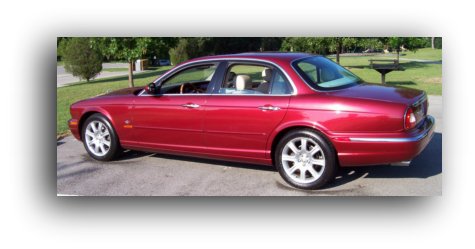Jaguar is Here!
Tweet
Follow @Custom_Car_Mall
Jag C-X75 Very Fast
Jaguar XJ220 The Fastest?
Jaguar!
The Cat's Meow: A History of Jaguar
By Kristen Hall-Geisler,
As a 20-year-old motorcycle enthusiast in England, William Lyons launched the Swallow Sidecar Company with a friend, William Walmsley, in 1922. Five years later, Swallow was fashioning bodies for chassis built by Austin, Fiat, and others.(ex., )
)
By 1931, the Coventry-based company had joined with nearby chassis builder Standard Motor Company to build the SS1, for "Standard-Swallow."
The first car to bear the name Jaguar appeared at the 1935 London auto show: the SS 100. The "SS" already had bad connotations in the U.K., thanks to the Nazis in Germany, and the letters would soon be dropped from the company name.X Marks the Spot:During WWII, Jaguar returned to building sidecars, but this time for the military. After the war, the company debuted its first sports car, the XK 120, at the 1948 auto show in Earls Court.
Lyons originally intended to build only 200 of the cars, but demand for the striking body with a top speed of 120 mph was too great, and he geared up the Coventry line for mass production. In 1953, a drophead coupe version was added to the lineup.C You Later:Jaguar followed the success of the XK 120 with its C-type, or competition type, cars of the 1950s. The underpinnings were based on the 120, but the bodies were all-new and aerodynamic. The car debuted in the 1951 24 Hours of Le Mans race--and won, with Stirling Moss at the wheel. Altogether, there were only 54 C-types ever built.
In 1955, Lyons suffered the tragedy of losing his only son, John, on a trip to Le Mans; it was also the year Enzo Ferrari's son Dino died. Later that same year, Lyons was knighted by Queen Elizabeth.
D Is for Destiny:Jaguar improved on the touring-ready 120 with the new XK 140, and updated its race squad with the legendary and instantly recognizable D-type.
The bass-mouth front intake, the bulbous, curved fenders, and the aerodynamic fin behind the driver's head were innovations in auto design. In 1954, the first D-type was driven from England to France for testing at Le Mans.
It didn't win in 1954, but it did in 1955--after driver Mike Hawthorn caused an accident that resulted in more than 80 deaths, including that of Mercedes driver Pierre Levegh. Jaguar didn't advertise the win.Iconic E-Types:While most automotive histories involve companies being at the mercy of creditors and buyers, in 1960, Lyons bought Daimler.
In 1961, he bought truck manufacturer Guy Motors, and in 1963, he bought Coventry-Climax, maker of race engines and forklifts. In its own factories, Jag had created the iconic, long-nosed E-type, which debuted in 1961. In 1966, Lyons announced that Jaguar would merge with British Motor Corporation, though he would stay on as a consultant. In 1968, the 4.2-liter Series 2 debuted, followed by the ill-conceived V12 Series 3 E-type of 1971.Things Get Messy:BMC also owned Austin-Healey and MG, and in 1966 became British Motor Holdings. This entity merged with Leyland, owner of Triumph and Rover, in 1968, to become the British Leyland Motor Company.
At this point, many of the Jaguars rolling out of Coventry were sedans like the new XJ6, plus the Series 3 XKE. But Jag was still close to bankruptcy, so in 1975, the government took control under a new name, Leyland Cars.
This didn't work either, so Jaguar Rover Triumph split off. After years of struggle, Jaguar debuted the XJ40 and became solvent once again. In 1984, the company was privatized again, and in 1985, Lyons died.Ford Steps In:The idea of staunchly British Jaguar having a foreign owner was inconceivable--unless you were the head of Jaguar and knew the company needed resources for new models.
Enter Ford Motor Company with $2.56 billion in 1990. The company used the cash to modernize and expand its facilities, and to produce XKR and XK8 sports coupes. It also brought the much anticipated XJ 220 prototype to market in 1992--to nearly worldwide disappointment.
The 6.2-liter V12 had been downgraded to a 3.5-liter V6, and the all-wheel drive was swapped for more conventional rear-wheel drive. The car wasn't even legal to own in the U.S.The Modern Era:Jaguar continues to build X-type cars, both sedans and coupes, with a sporting heritage. The latest lineup includes the XJ, XK, and XF, all of which seem to share something with owner Ford and stablemate Volvo.
Not for long, though--in 2008, Jaguar was sold once again, thanks to the auto industry's fall from great heights. In a neat twist on history, Jaguar (along with Land Rover) is owned by Tata Motors, based in the former British colony of India.Retrieved from online on 10/16/2011. http://exoticcars.about.com/od/overviewsofmaker1/p/JagHistory.htm
Return to Exotic Cars from Jaguar






